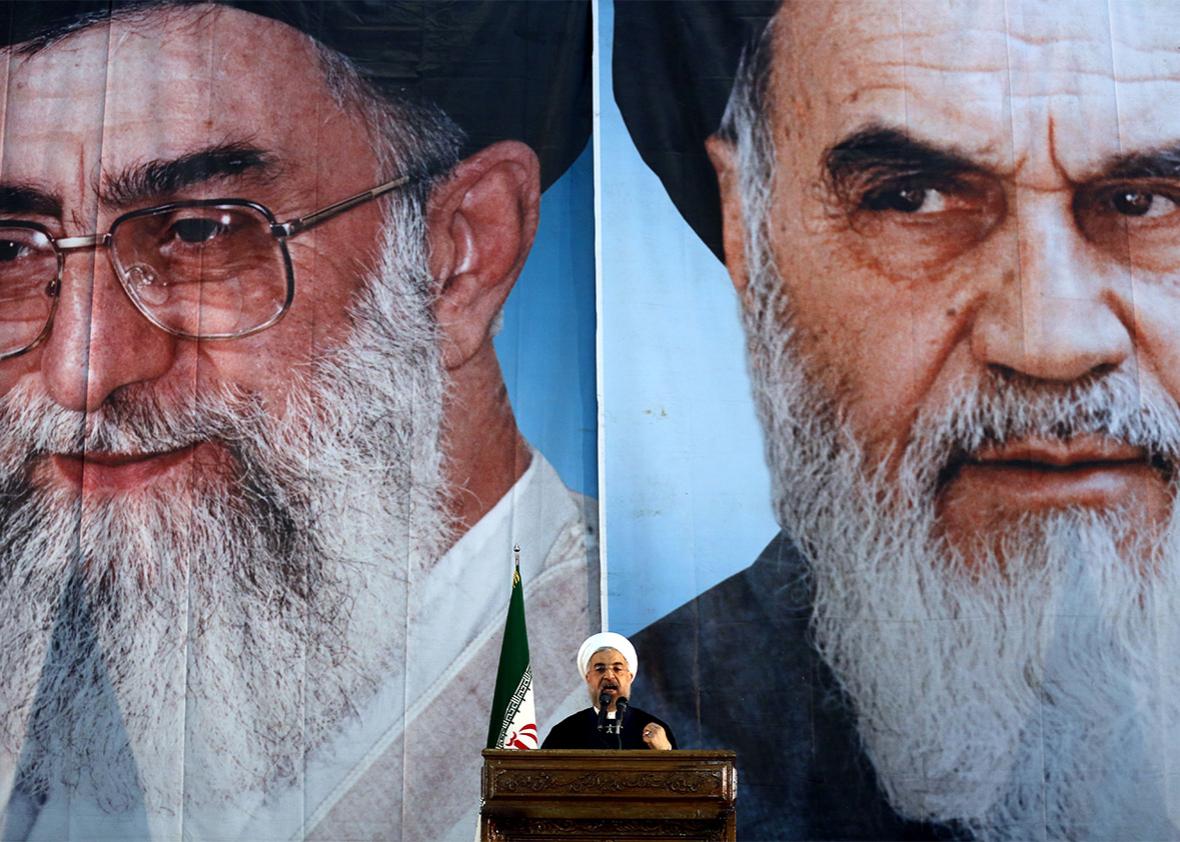Sanctions have been lifted on Iran, and a moment of change has arrived. President Obama has called this “a unique opportunity—a window—to try to resolve important issues.” The brilliant ex-diplomat Nicholas Burns has said we are at a “potential turning point in the modern history of the Middle East.” And of course they are right. The diplomacy of the Middle East will now change, for better or for worse, forever.
But be very wary of anyone who claims anything more, and certainly be careful of anyone who claims anything more for Iran itself. President Hassan Rouhani is not Mikhail Gorbachev, and this is not a perestroika moment. Iran is not “opening up” or becoming “more Western” or somehow more liberal. Maybe Iran’s foreign minister will now pick up the phone when John Kerry calls. But other than that, the nature of the Iranian regime has not been altered at all.
On the contrary, the level of repression inside the country has actually grown since the “moderate” Rouhani was elected in 2013. The number of death sentences has risen. In 2014, Iran carried out the largest number of executions anywhere in the world except for China. In 2015, the number was more than 1,000. Partly this is because Iran’s chief justice has boasted of the eradication, i.e. mass murder, of drug offenders, many of whom are juveniles, or convicted on dubious evidence.
Political pressure and religious discrimination have increased, too. Women who don’t wear veils are still liable to arrest and sentencing. The penalties for apostasy, adultery, and homosexuality are still high, up to and including capital punishment. Cultural dissidents are also under pressure, even more so since the sanctions-lifting deal was announced. On Jan. 7, the poet Hila Sedighi was arrested after landing at Tehran Airport and detained for 48 hours, presumably as a warning. Last October, a Kurdish filmmaker received six years and 223 lashes for “insulting the sacred.” When four Americans were released from Iranian prisons last week, the International Campaign for Human Rights in Iran noted that hundreds of other political prisoners, including some foreigners, remain in Iranian prisons.
If it were possible to separate all of these stories into a box and call Iran a country with “bad human rights” but “improving foreign policy,” then maybe there would be a case for ignoring them. But—as we’ve learned to our cost, in Russia among other places—regimes that need violence to repress their citizens do not make reliable diplomatic partners: Any ruling clique that fears popular revolt will always, at the end of the day, tailor its foreign policy to the goal of keeping itself in power. Right now, Rouhani and his foreign minister, Javad Zarif, think that lifting sanctions will help improve Iran’s economy and create popular support. But if it doesn’t, then they or their successors will immediately direct public anger and emotion at the Great Satan once again.
The same warning applies to the Western businessmen lining up at the borders to enter Iran. No doubt there will be many Iranians willing to help them get rich, if it’s mutually beneficial. No doubt some will make money, though it might be hard to hold on to it in a country whose courts are politicized and whose judges are selected by an arbitrary and opaque process. But either way, there isn’t much point in wishfully hoping that foreign investment will “open up” Iran either: In the current circumstances, it’s far more likely to enrich the existing elite. If so, the result will be greater repression, more effective disinformation, and of course more money for the export of the ideology of the Iranian revolution to Syria, Lebanon, and Iraq.
So yes, change has come to Middle Eastern diplomacy. But change has not come to Iran. And until it does, Iran will remain a source of instability and violence all across the region.
